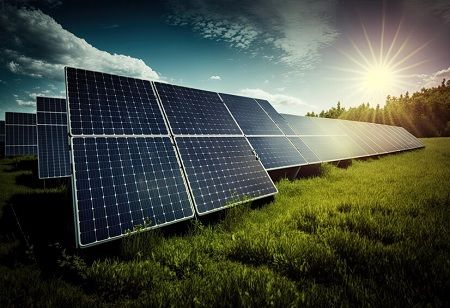
IIT Mandi Conducts Comprehensive Assessment of Solar Cell Technologies

 Researchers from the Indian Institute of Technology (IIT) Mandi have conducted a comprehensive Life Cycle Assessment (LCA) of five solar cell technologies to determine the most sustainable and profitable options for solar energy production in India. This pivotal study, published in the Journal of Environmental Management, aims to enhance the environmental performance of solar technologies in India, particularly after the disruptions in the solar supply chain caused by COVID-19.
Researchers from the Indian Institute of Technology (IIT) Mandi have conducted a comprehensive Life Cycle Assessment (LCA) of five solar cell technologies to determine the most sustainable and profitable options for solar energy production in India. This pivotal study, published in the Journal of Environmental Management, aims to enhance the environmental performance of solar technologies in India, particularly after the disruptions in the solar supply chain caused by COVID-19.
India has made significant progress in clean energy from 2010 to 2020, largely driven by initiatives like the Jawaharlal Nehru National Solar Mission. Following COP-26, the emphasis shifted to green solar manufacturing to improve supply chain reliability, energy security, and decarbonisation. Understanding the pros and cons of various solar technologies is crucial for developing efficient solar power systems suited to Indian conditions.
The IIT Mandi researchers assessed five solar technologies: Mono-silicon, Polysilicon, Copper Indium Gallium Selenide (CIGS), Cadmium Telluride (CdTe), and Passivated Emitter and Rear Contact (PERC). They used the life cycle assessment tool to perform a cradle-to-gate analysis, evaluating eighteen environmental impact categories, including global warming, ozone depletion, human toxicity, and particulate matter formation.
The study revealed that CdTe technology had the lowest environmental impact among the five technologies, with the least carbon dioxide emissions, ozone depletion potential, human health effects, and particulate air pollution. CIGS PV cells followed closely in terms of sustainability.
"The Life Cycle Assessment of solar module technologies can help identify the most sustainable technology that balances economic, social, and environmental benefits", said Dr. Satvasheel Ramesh Powar, Associate Professor, School of Mechanical and Materials Engineering, IIT Mandi. "Our findings can guide policymakers to promote the most sustainable technologies, boosting the low-carbon economy and reducing the environmental impact of solar energy production".